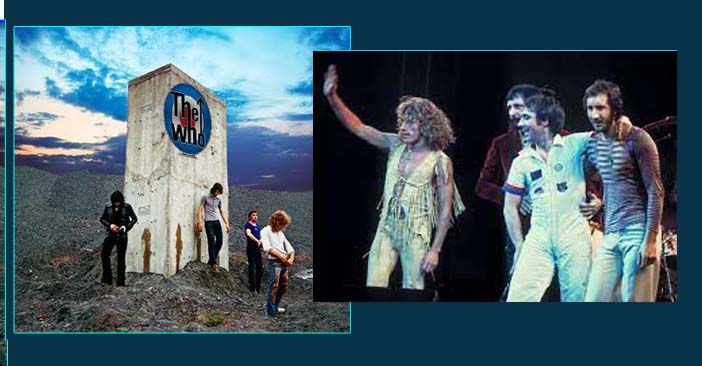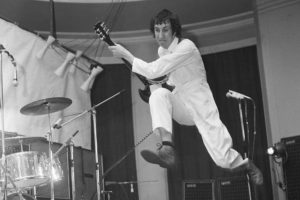
The project was cancelled due to its complexity and conflicts with Kit Lambert, the band's manager, but Townshend was persuaded to record the songs as a straightforward studio album.
The Who recorded Who's Next with assistance from recording engineer Glyn Johns. After producing the song "Won't Get Fooled Again" in the Rolling Stones Mobile Studio, they relocated to Olympic Studios to record and mix most of the album's remaining songs. They made prominent use of the synthesizer on the album, particularly on "Won't Get Fooled Again" and "Baba O'Riley", which were both released as singles. The cover photo was shot by Ethan Russell and made reference to the monolith in the 1968 film 2001: A Space Odyssey, as it featured group members having urinated against a concrete piling protruding from a slag heap.
Who's Next was an immediate success when it was released on 14 August 1971. It has since been viewed by critics as the Who's best record and one of the greatest albums of all time. It was reissued on CD several times with additional songs originally intended for Lifehouse. By 1970, the Who had obtained significant critical and commercial success, but they had started to become detached from their original audience. The mod movement had vanished, and the original followers from Shepherd's Bush had grown up and acquired jobs and families. The group had started to drift apart from manager Kit Lambert due to his preoccupation with their label, Track Records.
They had been touring since the release of Tommy the previous May, with a set that contained most of that album, but realized that millions had now seen their live performances, and Pete Townshend in particular recognized that they needed to do something new. A single, "The Seeker", and a live album, Live at Leeds were released in 1970, and an EP of new material ("Water", "Naked Eye", "I Don't Even Know Myself", "Postcard" and "Now I'm a Farmer") was recorded, but not released as the band felt it would not be a satisfactory follow-up to Tommy.
Instead, the group tackled a project called Lifehouse. This evolved from a series of columns Townshend wrote for Melody Maker in August 1970, in which he discussed the importance of rock music, and in particular what the audience could do. Of all the group, he was the most keen to use music as a communication device, and wanted to branch out into other media, including film, to get away from the traditional album / tour cycle.


The lead single, "Won't Get Fooled Again" (edited down to three and a half minutes), was released on 25 June 1971 in the UK and 17 July in the US ahead of the album. It reached #9 and #15 in the charts respectively.The album was released on 14 August in the US and 27 August in the UK. It became the only album by the Who to top the UK charts.
The Who starting touring the US just before the album was released. The group used the Lifehouse PA, though soundman Bob Pridden found the technical requirements of the equipment to be over-complicated.The set list was revamped, and while it included a smaller selection of numbers from Tommy, several new numbers from the new album such as "My Wife", "Baba O'Riley" and "Won't Get Fooled Again" became live favourites. The latter two songs involved the band playing to a backing track containing the synthesizer parts. The tour moved to the UK in September, including a show at The Oval, Kennington in front of 35,000 fans, and the opening gig at the Rainbow Theatre in Finsbury Park, before going back to the US, ending in Seattle on December 15. The group then took eight months off touring, the longest break of their career at that point.
